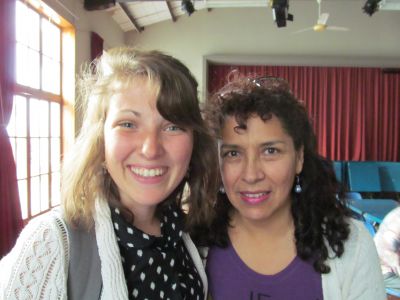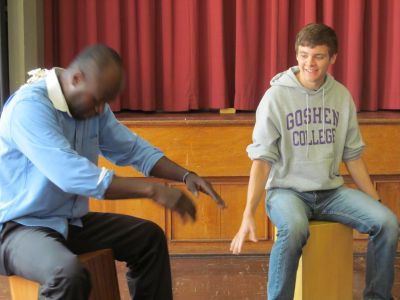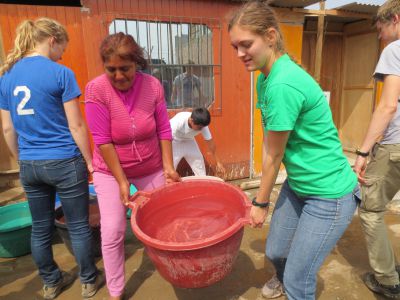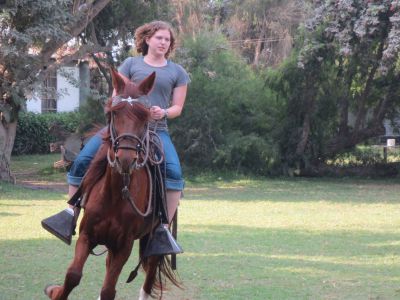Life on the Coast

The students have spent the past week getting to know Lima. They have spent time with their new host families. They have learned how to travel by bus from their family’s home to Iglesia Buen Pastor (Good Shepherd Church) where we meet each morning. They have met a new set of lecturers, workshop leaders and Spanish instructors. And they are quickly becoming accustomed to life at a faster pace, the pace of a city that continues to grow, a city that has its eyes turned toward the Global North.

James Plunkett is an American business person who fell in love with a Peruvian woman and relocated to Lima 49 years ago. He opened our lecture series with a talk on presidential politics from the early 1960s until the present. Camilo Ballumbrosio is an Afro-Peruvian musician descended from slaves brought from West Africa centuries ago and sold to plantation owners along the southern coast. He offered our first workshop on the theme of music, teaching the students how to play a cajon (rectangular drum) and dance the zapateo (tap dance). Jenny Menacho’s family originated in the town of Caras in the Andean highlands. She works for the newly formed Ministry of Development and Social Inclusion and described the government’s recent efforts to bring those living on the margins of society into the mainstream.

To learn more about poverty and social exclusion we traveled to Villa El Salvador, a city located in Lima’s Southern Cone. We began our visit in a settlement that dates back 15 years, a neighborhood that lacks both water and sewage systems. Using funds provided by a donor we purchased several tanks of water and followed behind the tanker trucks offering water to the residents of the neighborhood. This gave us a safe and meaningful way to walk the streets of Chavin de Huantar and get a glimpse of what life is like there. Afterward we gathered in the modest home of a woman named Justina where we listened to the story of her neighbor, Corpusa, and enjoyed a lunch of pachamanca (“earthen pot,” a way of preparing chicken, potatoes and yams using herbs from the highlands).

In the afternoon we traveled farther south to a rural town called Lurin. Our hosts were the directors of INTAP (Institute for Technical Agropecuary Education). The institute is dedicated to improving livestock breeding and animal development. Students come from all over Peru as well as other parts of South America to learn how to raise cuy, rabbits, chickens, donkeys, cows and other farm animals. The highlight of our time was a riding demonstration with the famed caballo de paso (Peruvian walking horse), known for its smooth gate and graceful motion. We watched a rendition of the marinera, a traditional dance from the coast that incorporates a caballo, and afterward were given a chance to mount one of the horses.





































































